Retirement Resignation Letter Samples
-

Faculty Retirement Resignation Letter
download now -
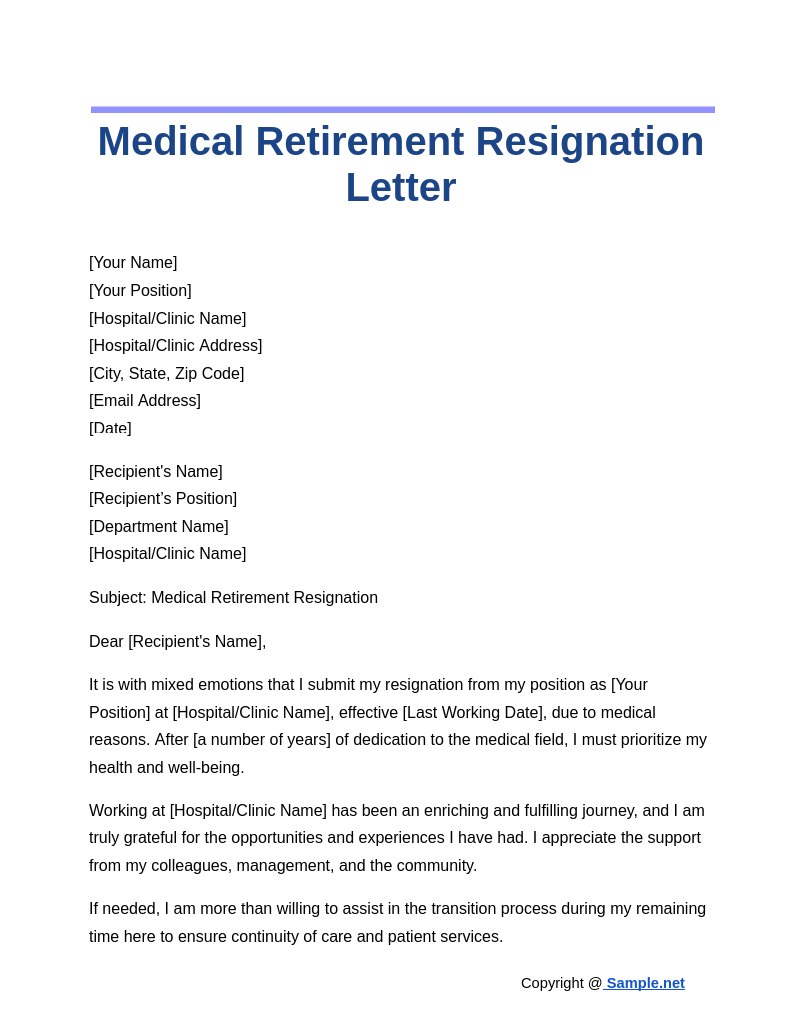
Medical Retirement Resignation Letter
download now -
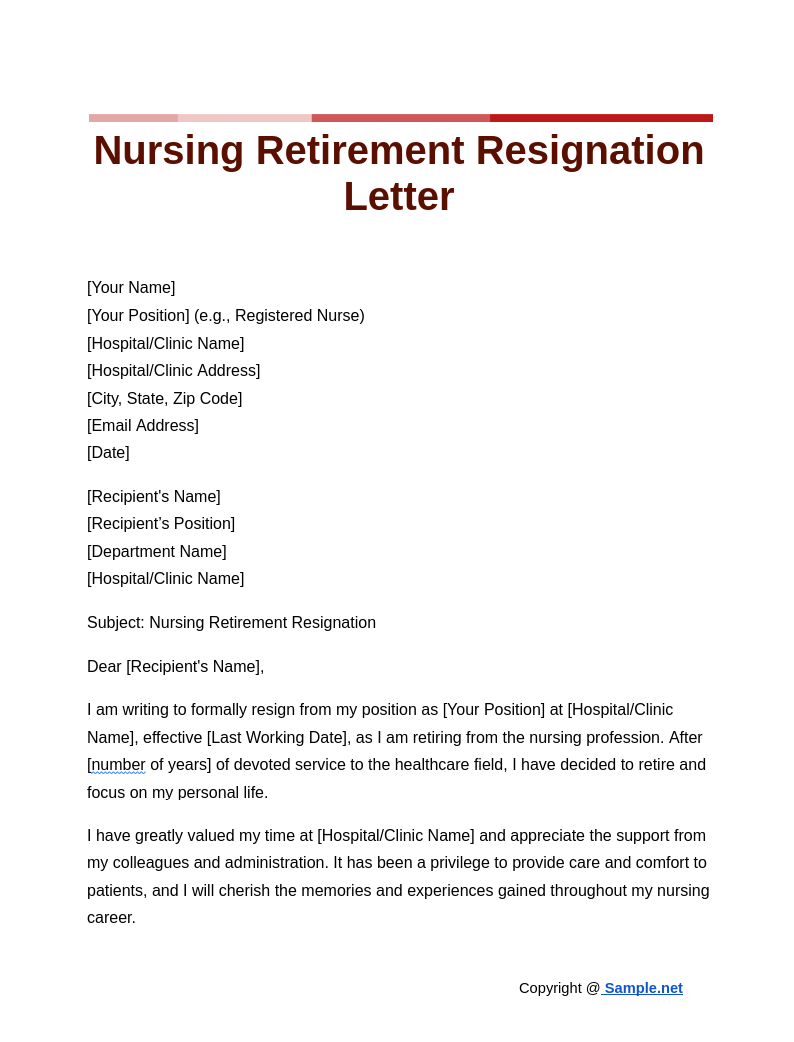
Nursing Retirement Resignation Letter
download now -
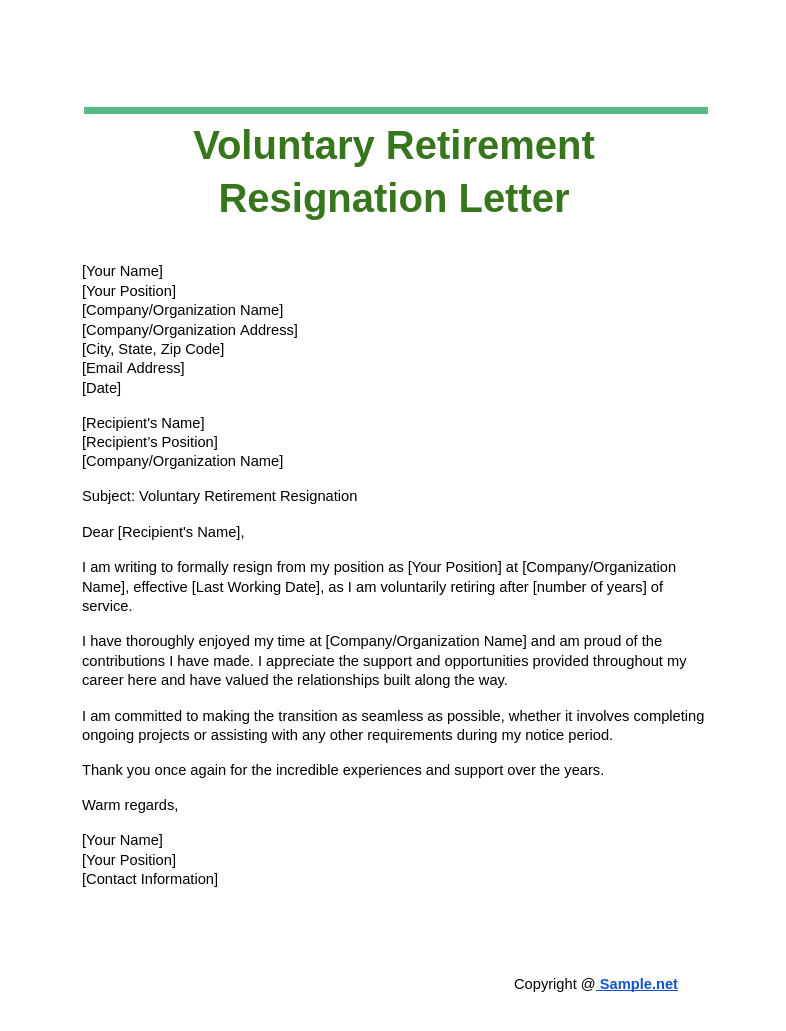
Voluntary Retirement Resignation Letter
download now -

Retirement Resignation Letter Template
download now -
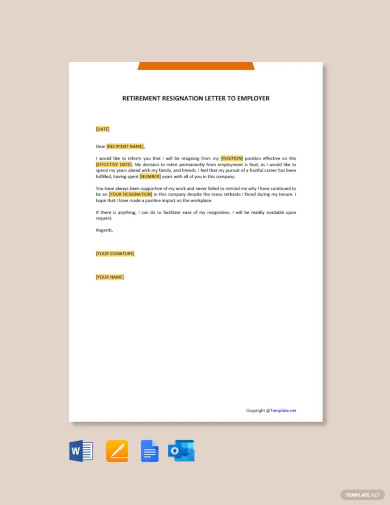
Free Retirement Resignation Letter to Employer Template
download now -
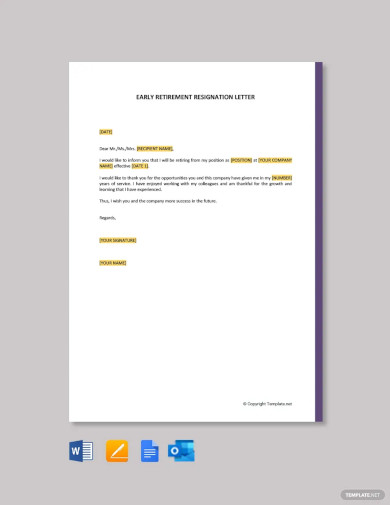
Early Retirement Resignation Letter Template
download now -
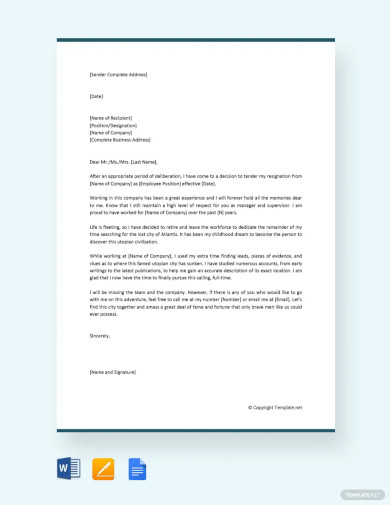
Free Funny Retirement Resignation Letter Template
download now -
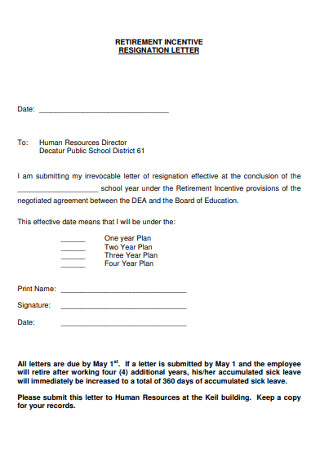
Retirement Incentive Resignation Letter
-
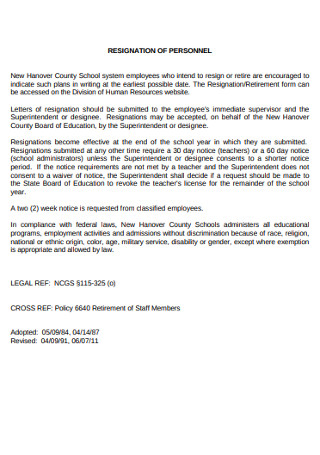
Retirement Personal Resignation Letter
-
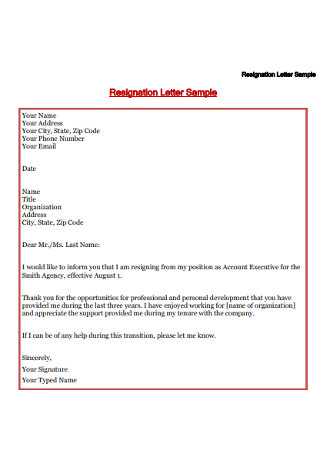
Sample Retirement Resignation Letters
-
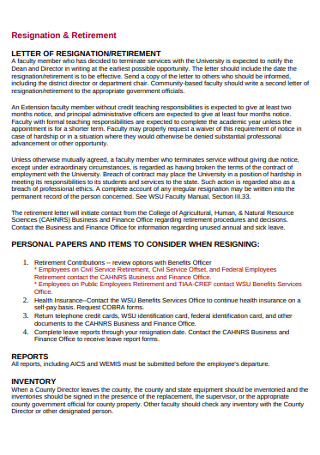
Basic Retirement Resignation Letter
-

Standard Retirement Resignation Letter
-

College Employee Resignation Letter
-
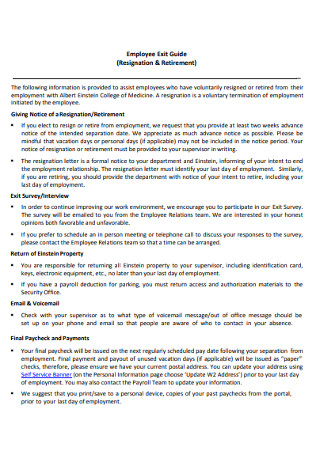
Employee Retirement Resignation Letter
-

Sample Resignation Letter
-
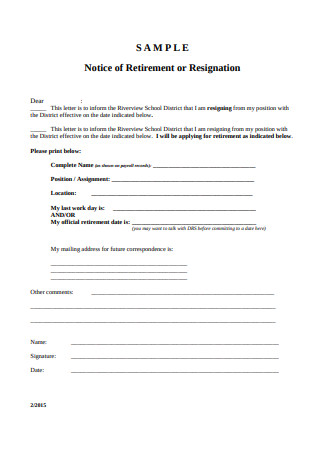
Notice of Retirement or Resignation
-

Retirement Letter
-

Retirement Letter Form
-
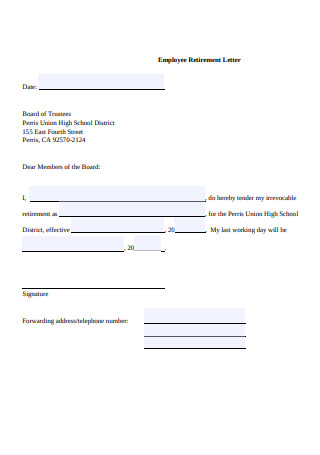
Employee Retirement Letter
-
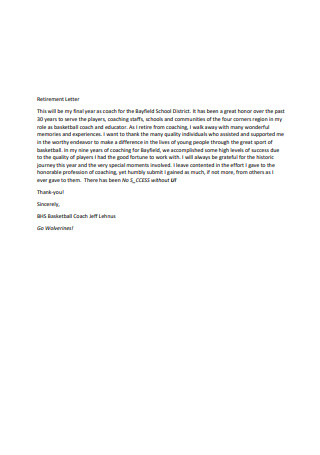
Retirement Letter in PDF Format
-
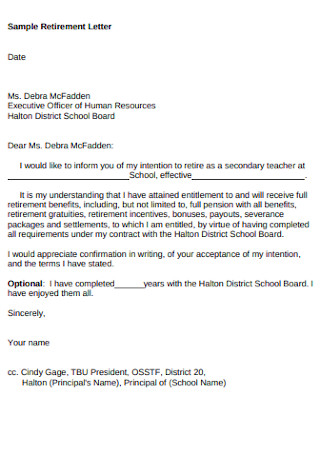
Sample Retirement Letter
-
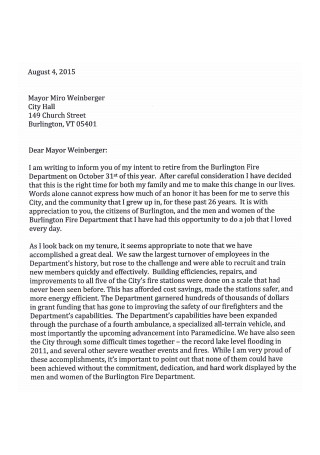
Simple Retirement Letter
-

Employee Retirement Letter via Email
-
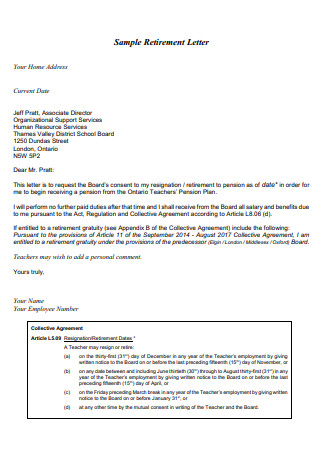
Sample Retirement Letter in PDF
-
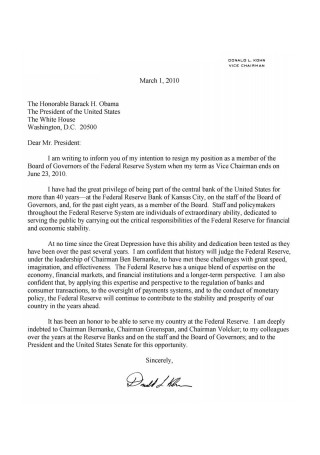
Vice Chairman Resignation Letter
-
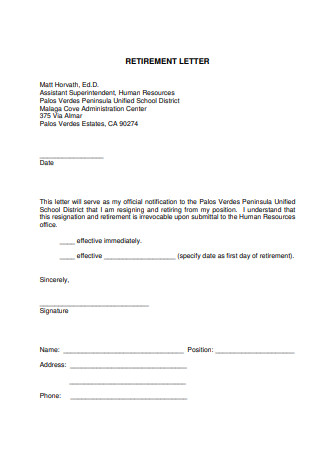
Printable Retirement Letter
-

Sample Resignation Acknowledgement Letter
-
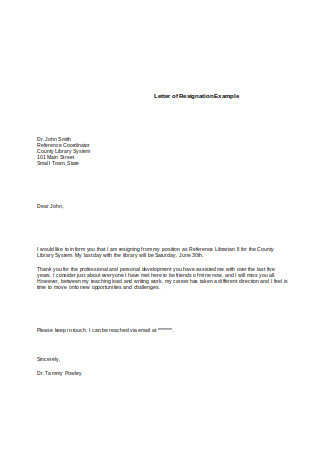
Teacher Retirement Resignation Letter Sample
download now
FREE Retirement Resignation Letter s to Download
Retirement Resignation Letter Format
Retirement Resignation Letter Samples
What is a Retirement Resignation Letter?
Importance of Retirement Resignation Letter
Elements of A Retirement Resignation Letter
How to Write a Retirement Resignation Letter
Why is it necessary to write a retirement resignation letter?
When should I submit my retirement resignation letter?
What should I include in a retirement resignation letter?
Should I mention my future plans in the letter?
How long should a retirement resignation letter be?
How do I address emotional attachment to the company in my letter?
How should I format a retirement resignation letter?
Can a retirement resignation letter be retracted if needed?
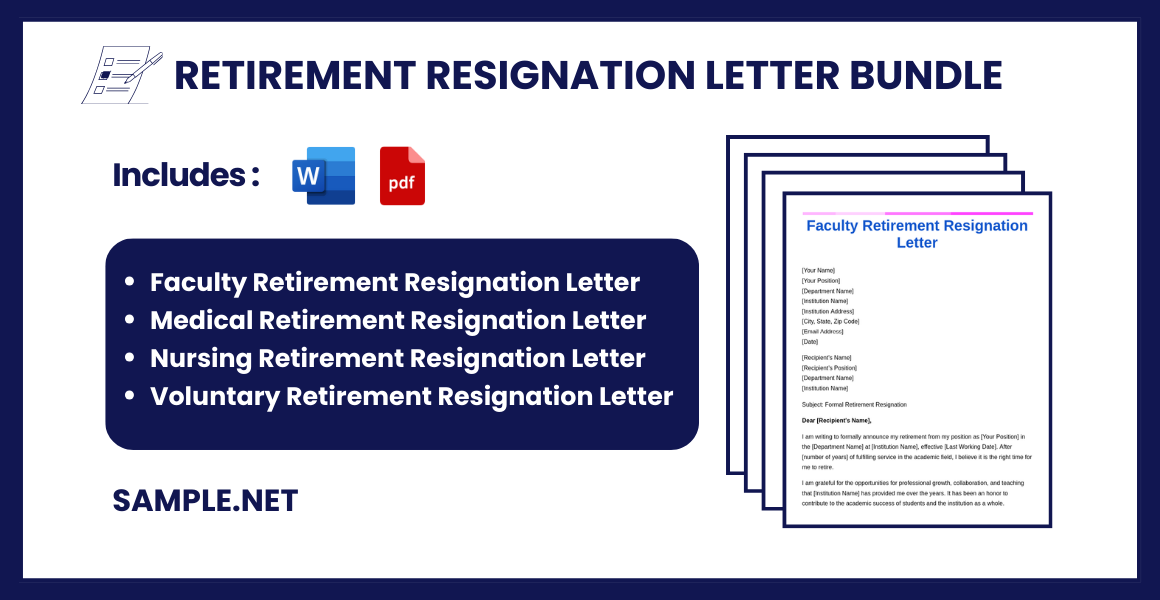
Download Retirement Resignation Letter Buundle
Retirement Resignation Letter Format
[Your Name]
[Your Position]
[Company Name]
[Company Address]
[City, State, Zip Code]
[Email Address]
[Date]
[Recipient’s Name]
[Recipient’s Position]
[Company Name]
Subject: Formal Resignation Due to Retirement
Dear [Recipient’s Name],
I am writing to formally announce my resignation from my position as [Your Position] at [Company Name], effective [Last Working Date]. After [number of years] of dedicated service to the company, I have made the decision to retire and begin the next chapter of my life.
Working at [Company Name] has been one of the most rewarding experiences of my career, and I am grateful for the support, encouragement, and opportunities provided by both you and the team. I am proud of the contributions I have made during my tenure and will cherish the memories and relationships built here.
I am more than willing to assist in any way possible during my remaining time to ensure a smooth transition, whether it involves training a replacement or completing ongoing projects.
Once again, thank you for the opportunity to be a part of [Company Name]. I look forward to staying in touch and wish the company continued success in the future.
Warm regards,
[Your Name]
[Your Position]
[Contact Information]
What is a Retirement Resignation Letter?
A retirement resignation letter is a professional resignation letter that announces your intention to leave the company due to retirement. For this type of resignation letter, you are not writing to inform your employer that you are moving to another company but you are informing them of your impending departure from the corporate, working world. You can also offer and open the door for possibilities in the future, such as giving consultations and assistance during the transition period. It can also open the discussion regarding your retirement benefits.
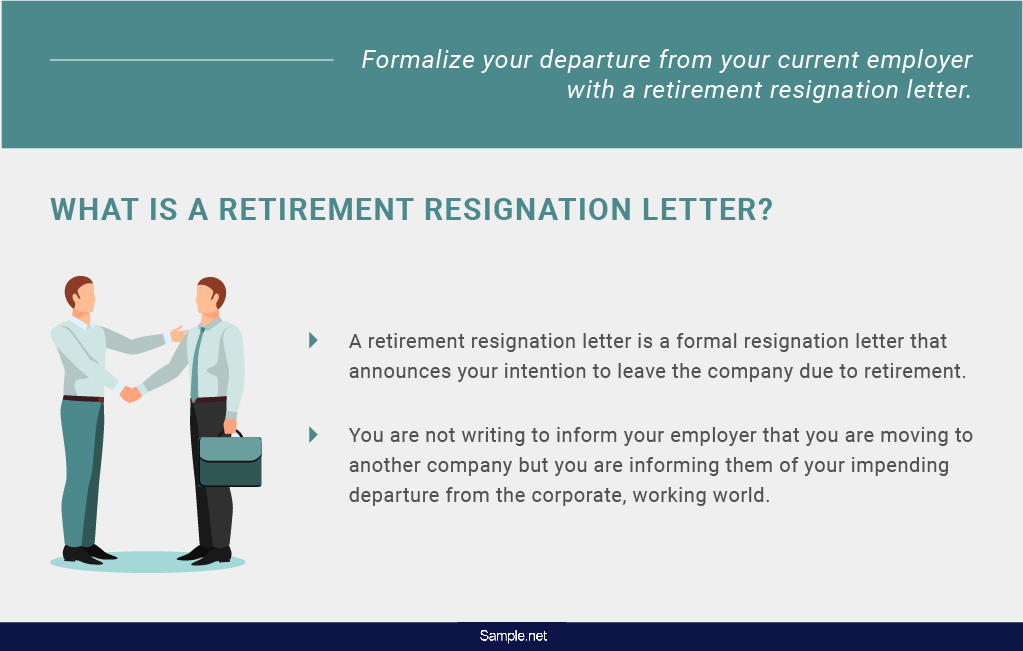
Importance of Retirement Resignation Letter
BLS data reveals that the age makeup of the US labor force is changing and that in the 1990s, the older workers—which BLS defines as those who are aged 55 and older—increased their share on the labor force. In addition to that, BLS also projects that the labor force will grow to about 164 million people in 2024 and about 13 million from that are expected to be ages 65 and older?the ages when the workforce is already eligible for retirement. If you are among the older workers who are retiring soon, your resignation from the company will surely be a great loss especially if you hold a significant, key position that might not be easy to fill. This only means that sending a retirement resignation letter will not only benefit you but it can also benefit the company.
As mentioned, the company will experience loss as soon as you resign but when you hand in your retirement resignation letter, you give the company a chance and the go signal to look for your replacement and make other necessary preparations before the effective date of your resignation. Leaving without proper and printable notice will jeopardize the company—what a chaotic workplace it would be when they find out that one of their important employees resigned without any warning.
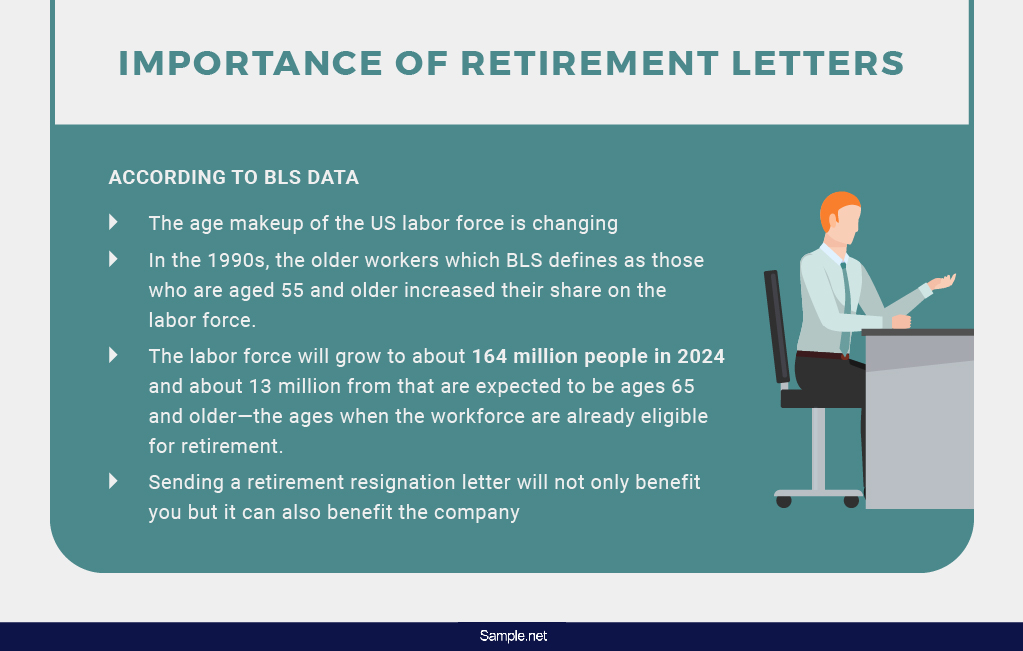
Elements of A Retirement Resignation Letter
If you want to ensure that the transition of the contents in your retirement resignation letter will run as smoothly as possible, make sure that it contains all of the necessary elements that enable you to compose an effective letter. You can also see more on Relieving Letter. With that, we have laid them out and discussed them below.
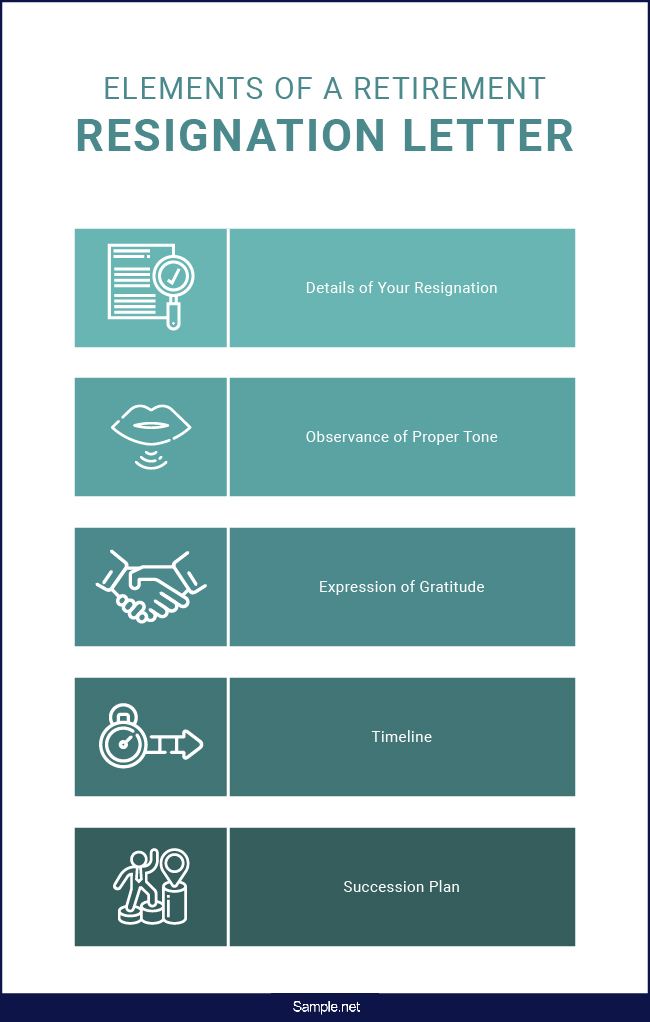
How to Write a Retirement Resignation Letter
A retirement resignation letter should clearly state your intent to retire, focusing on a concise message that effectively conveys your purpose. You can also see more on Two Weeks Notice Resignation Letters. Follow simple steps to create a well-written letter.
Step 1: Begin with a Proper Salutation
Start your letter with a formal salutation, such as “Dear [Manager’s Name]” or “Dear [HR Department].” Make sure you use the recipient’s correct name and title to maintain professionalism. This approach sets a respectful tone for the letter and emphasizes your formal intent to retire.
Step 2: Clearly State Your Retirement Intention
In the opening paragraph, state your decision to retire clearly and include the intended retirement date. For example, you might write, “I am writing to formally announce my decision to retire from my position as [Your Position] on [Date].” Be specific to avoid any misunderstandings about your plans.
Step 3: Express Gratitude for the Opportunity
In the following paragraph, show appreciation for the time spent in the organization. Mention some positive experiences, skills learned, or personal growth you’ve gained during your tenure. For instance, you could say, “I am grateful for the support and opportunities I have received over the [number] years with [Company Name].”
Step 4: Offer Assistance During the Transition
Include an offer to assist during the transition process, whether by training your replacement or completing significant tasks. You can state this offer briefly, such as, “I am available to assist with the transition process in any way I can.” This shows your commitment to ensuring a smooth handover. You can also see more on Police Officer Resignation Letters.
Step 5: End with a Professional Closure
Conclude the letter on a positive note, wishing the company continued success. Add a formal sign-off, such as “Sincerely” or “Best Regards,” followed by your signature and printed name. Ensure the letter is concise, clear, and maintains a positive tone throughout.
In conclusion, a well-crafted retirement resignation letter allows you to formally end your professional journey while expressing appreciation for the opportunities received. It also helps ensure a smooth handover and fosters goodwill, leaving a positive impression as you embark on this new chapter of life. You can also see more on Board Resignation Letters.
Why is it necessary to write a retirement resignation letter?
It formalizes your decision and creates a record of your departure. It also ensures clarity on your retirement date. Additionally, it maintains professionalism.
When should I submit my retirement resignation letter?
Ideally, submit it 1-3 months before your retirement date. This allows enough time for transition planning. It also shows courtesy to your employer.
What should I include in a retirement resignation letter?
Include your intent to retire, the retirement date, and a note of gratitude. You can also offer assistance during the transition. Keep it concise and formal.
Should I mention my future plans in the letter?
It’s optional and depends on your comfort level. If you do, keep it brief and positive. Focus more on your gratitude and retirement plans.
How long should a retirement resignation letter be?
It should be brief, typically one page. Focus on clarity, gratitude, and your retirement date. Avoid unnecessary details to keep it concise.
How do I address emotional attachment to the company in my letter?
Mention positive memories, personal growth, and professional relationships. Express gratitude for the support received over the years. Keep it warm yet professional.
How should I format a retirement resignation letter?
Use a standard business letter format: salutation, body, and sign-off. Make it clear, professional, and easy to read. Ensure there are no grammatical errors.
Can a retirement resignation letter be retracted if needed?
Yes, if circumstances change, you can request to retract it. Discuss this with your employer before taking any action. A revised agreement may be needed.
